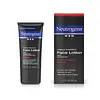What's inside
What's inside
 Key Ingredients
Key Ingredients

 Benefits
Benefits

 Concerns
Concerns

 Ingredients Side-by-side
Ingredients Side-by-side

Phenylbenzimidazole Sulfonic Acid 1%
UV AbsorberEthylhexyl Methoxycinnamate 6%
UV AbsorberBenzophenone-3 2%
UV AbsorberWater
Skin ConditioningC12-15 Alkyl Benzoate
AntimicrobialGlycerin
HumectantGlycine Max Seed Extract
Skin ConditioningCetyl Alcohol
EmollientPotassium Cetyl Phosphate
EmulsifyingCetearyl Alcohol
EmollientDimethicone
EmollientPanthenol
Skin ConditioningAllantoin
Skin ConditioningTocopheryl Acetate
AntioxidantCamellia Sinensis Leaf Extract
AntimicrobialBisabolol
MaskingCetearyl Glucoside
EmulsifyingButylene Glycol
HumectantXanthan Gum
EmulsifyingTetrasodium EDTA
Chlorphenesin
AntimicrobialTriethanolamine
BufferingMethylparaben
PreservativeIsopropylparaben
PreservativeIsobutylparaben
AntimicrobialButylparaben
MaskingPhenoxyethanol
PreservativeParfum
MaskingPhenylbenzimidazole Sulfonic Acid 1%, Ethylhexyl Methoxycinnamate 6%, Benzophenone-3 2%, Water, C12-15 Alkyl Benzoate, Glycerin, Glycine Max Seed Extract, Cetyl Alcohol, Potassium Cetyl Phosphate, Cetearyl Alcohol, Dimethicone, Panthenol, Allantoin, Tocopheryl Acetate, Camellia Sinensis Leaf Extract, Bisabolol, Cetearyl Glucoside, Butylene Glycol, Xanthan Gum, Tetrasodium EDTA, Chlorphenesin, Triethanolamine, Methylparaben, Isopropylparaben, Isobutylparaben, Butylparaben, Phenoxyethanol, Parfum
Homosalate 15%
Skin ConditioningOctocrylene 10%
UV AbsorberEthylhexyl Salicylate 5%
UV AbsorberButyl Methoxydibenzoylmethane 3%
UV AbsorberBenzophenone-3 3%
UV AbsorberAdipic Acid/Diglycol Crosspolymer
BHT
AntioxidantC12-15 Alkyl Benzoate
AntimicrobialCaprylyl Glycol
EmollientCera Alba
EmollientDiethylhexyl 2,6-Naphthalate
EmollientNeopentyl Glycol Diethylhexanoate
EmollientNeopentyl Glycol Diisostearate
EmulsifyingOctyldodecyl Neopentanoate
EmollientOzokerite
Emulsion StabilisingParaffin
PerfumingParfum
MaskingPolyethylene
AbrasiveSilica
AbrasiveHomosalate 15%, Octocrylene 10%, Ethylhexyl Salicylate 5%, Butyl Methoxydibenzoylmethane 3%, Benzophenone-3 3%, Adipic Acid/Diglycol Crosspolymer, BHT, C12-15 Alkyl Benzoate, Caprylyl Glycol, Cera Alba, Diethylhexyl 2,6-Naphthalate, Neopentyl Glycol Diethylhexanoate, Neopentyl Glycol Diisostearate, Octyldodecyl Neopentanoate, Ozokerite, Paraffin, Parfum, Polyethylene, Silica
Ingredients Explained
These ingredients are found in both products.
Ingredients higher up in an ingredient list are typically present in a larger amount.
You probably know this ingredient as Oxybenzone, a sunscreen ingredient. It is a broad-spectrum sunscreen ingredient, meaning it can protect the skin against UVB and short UVA rays. The absorption range is 270-350 nm with peak absorption at 288 and 350 nm.
This chemical ingredient protects your skin by using chemical reactions to convert UV rays into heat and energy. UV absorbers may absorb both UVA and UVB rays. It is often combined with other sunscreen ingredients to help with stability.
Ongoing research is looking into whether oxybenzone causes skin irritation and sensitivity. However, it has been shown to trigger contact dermatitis in some studies.
Oxybenzone is allowed in certain concentrations by many countries. It is allowed up to 6% in the US, and Canada, 5% in Japan, and 10% in Australia. Other countries and regions of the US have banned this ingredient to protect coral reefs and marine ecosystems. These places include Hawaii, Key West, US Virgin Islands, marine parks in Thailand, Aruba, and Palau.
The EU currently allows the following maximum concentrations:
Studies show conflicting results about oxybenzone being absorbed into the human body. The Swedish Research Institute has advised careful use of this ingredient by pregnant women and children. We always recommend speaking with a professional if you have concerns about this ingredient and your health.
Learn more about Benzophenone-3C12-15 Alkyl Benzoate is made up of Benzoic Acid and long chain alcohols. It has a low molecular weight.
C12-15 Alkyl Benzoate is an emollient and texture enhancer. Due to its solubility, it is often used in sunscreens to help evenly distribute active ingredients.
As an emollient, C12-15 Alkyl Benzoate helps soften and hydrate your skin. Emollients create a film on your skin that traps moisture within.
This ingredient has been reported to cause eye irritation.
Learn more about C12-15 Alkyl BenzoateParfum is a catch-all term for an ingredient or more that is used to give a scent to products.
Also called "fragrance", this ingredient can be a blend of hundreds of chemicals or plant oils. This means every product with "fragrance" or "parfum" in the ingredients list is a different mixture.
For instance, Habanolide is a proprietary trade name for a specific aroma chemical. When used as a fragrance ingredient in cosmetics, most aroma chemicals fall under the broad labeling category of “FRAGRANCE” or “PARFUM” according to EU and US regulations.
The term 'parfum' or 'fragrance' is not regulated in many countries. In many cases, it is up to the brand to define this term.
For instance, many brands choose to label themselves as "fragrance-free" because they are not using synthetic fragrances. However, their products may still contain ingredients such as essential oils that are considered a fragrance by INCI standards.
One example is Calendula flower extract. Calendula is an essential oil that still imparts a scent or 'fragrance'.
Depending on the blend, the ingredients in the mixture can cause allergies and sensitivities on the skin. Some ingredients that are known EU allergens include linalool and citronellol.
Parfum can also be used to mask or cover an unpleasant scent.
The bottom line is: not all fragrances/parfum/ingredients are created equally. If you are worried about fragrances, we recommend taking a closer look at an ingredient. And of course, we always recommend speaking with a professional.
Learn more about Parfum